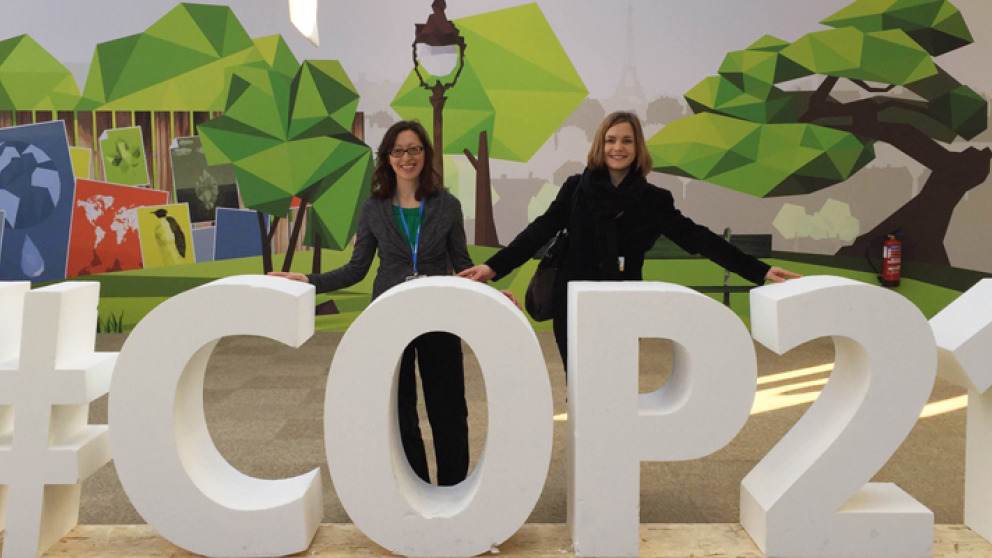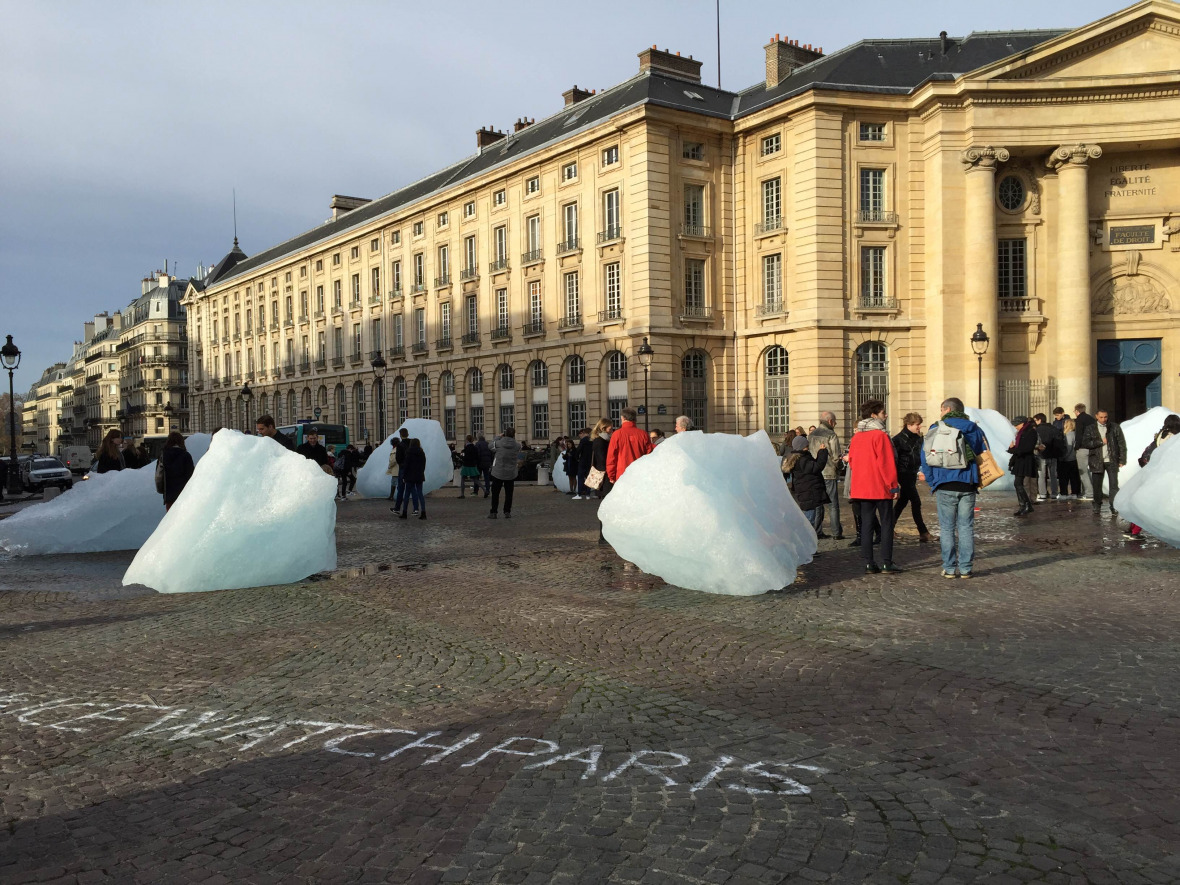Headline:
Impressions from a first-timer at COP21

When I told friends and co-workers that I would be attending the COP21 climate summit, the first response I got was usually “cool!” followed by “so what are you actually going to do there??” Well, I knew what I would be doing there: for months now, I have been working on behalf of the IASS with partners from the Climate and Clean Air Coalition (CCAC) and the UN Economic Commission for Europe (UNECE) to organize two side events on the connection between climate change and air quality in order to highlight how better air quality can have benefits for climate, health, and development. But what would COP21 actually be like? I was as interested as the next person. As someone who’s spent my career working on issues of air quality, I knew that the “COP”, short for the Conference of the Parties to the United Nations Framework Convention on Climate Change (what a mouthful, I know), was always big deal. So I boarded the plane for Paris with high expectations for this year’s 21st COP – not only because this year has been set as the deadline for finally reaching a global climate accord, but also because I finally got to personally experience what the whole thing was about.

The COP21 conference grounds at Le Bourget in the north of Paris resemble a small city, complete with a post office, bakeries, restaurants, and a central outdoor thoroughfare they call the Champs-Élysées. Inside the conference halls it is easy to get lost in the maze of seemingly endless exhibits and meeting rooms. At the core of the COP, negotiators from 195 countries are trying to reach a legally binding agreement that outlines how humanity will limit emissions to avoid catastrophic global warming. But people with an “observer” badge like me don’t have much access to the inner negotiations. Instead, the vast majority of the 40,000-plus attendees are occupied with a seemingly infinite number of so-called “side events” on every possible topic related to climate change. And indeed, climate change touches practically every aspect of human society. There are events on the impacts of climate on health, agriculture, human rights, and culture. There are events on transport, on finance, on governance. There are advocates for youth, women, and indigenous cultures. On top of that, environment ministers from around the world are not only negotiating, but also using side events to showcase their countries’ advances in green development and climate protection.
At two IASS side events, our Managing Scientific Director Mark Lawrence called for action on short-lived climate pollutants like black carbon, methane, and ozone in order to slow climate warming, save lives, and help deliver development goals. Joining him in echoing this message and in sharing experiences, success stories, and commitments were representatives from the UNECE, the World Bank, and ministers from Europe, Asia, and Africa. The message was not only about what needs to be done, but also how it could be done.
In some ways, attending the COP feels similar to all of the scientific conferences I have ever attended. People present their work and network with colleagues. There are a lot of PowerPoint presentations. But the sense of a common purpose is palpable, and it adds urgency and energy to the proceedings. Perhaps what has struck me most about COP21 is the feeling that so much of Paris has embraced the conference as their own, regardless of whether they are attending the “official” event or not. There are a huge number of public events at venues across the city, despite the fact that security concerns led to the cancellation of many planned demonstrations and marches. Last Friday night at the hip cafe La Recyclerie, a crowd of student types gathered to hear COP21 youth delegates report on what it’s like to be observers at the negotiations, and winners of the poetry contest “Spoken Word for the World” performed in a climate-themed poetry slam. At the Panthéon, kids, tourists, and just about everyone who passes by take pictures of the large-scale art installation “Ice Watch Paris”, in which twelve immense blocks of Greenland ice, arranged in a clock formation, are slowing melting away during COP21. As an individual person, it’s only possible to experience a tiny slice of all that’s going on.
Throughout most of my time at COP, reports coming from the negotiations themselves have remained optimistic about reaching a global climate deal by the end of the week. Being here in Paris, it’s easy to share that optimism. But all the goodwill in the world doesn’t mean anything if it’s not accompanied by the rapid, deep cuts in emissions that are necessary to avoid the most serious consequences of climate change, for the benefit of future generations and life on our planet. Even the most optimistic of us know that this will be no easy task.
Header image: IASS researchers Kathleen Mar and Birgit Lode at COP21. (c) Kathleen Mar

Add new comment